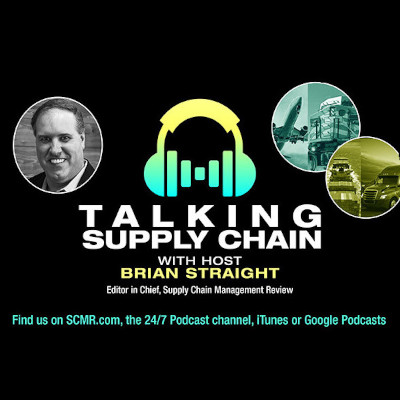Given the right tools, digital transformations seem fairly straightforward, but adopting new technology is never straightforward.
When Johnson & Johnson wanted to digitize process improvement and update its process mining discovery efforts, it deployed Celonis’ process mining technology. But, Johnson & Johnson’s Brooks Olphin, product line owner for process and task mining, understood that rolling out a technology locally is different than doing so globally. In a case study shared by Celonis, Olphin detailed how a well-equipped and well-structured Process Center of Excellence allowed Johnson & Johnson to generate value across the organization from the modernized process mining technology.

“That first analysis was a key learning for us, helping us understand how we can further roll analysis out globally,” Olphin said. “Ultimately, that initial exercise led to us creating global templates.
“For us, a global template is where we build a single data model that can be leveraged across multiple source systems, so that analysis can be used by different teams across multiple different regions, teams, and sectors,” he added.
Olphin said the global template allows the company to utilize best practices and “deliver things our teams will find practically useful day-to-day.”
“We listen to user requirements, build an analysis to meet them, then deploy that as a global template so that others can pick it up and repeat that success easily,” he noted.
Starting a digital transformation
Getting started on a digital transformation can be daunting, but Kerry Brown, lead transformation analyst at Celonis, told Supply Chain Management Review that how you view a digital transformation is part of that journey.
“Digital transformation, to me, is how does an organization really give themselves a different toolset to run their company,” she said.
That toolset enables management to focus on the business of running the company. Within supply chain, there are a number of new technologies such as artificial intelligence, that are getting incorporated in the day-to-day business. Brown said business leaders want to ensure investments in these technologies will enable the business to continue to excel.
A self-described “transformation evangelist” for Celonis, Brown says her job is to help clients “look at how do you not mess up these big investments.”
SAP changes coming
For companies hesitant about beginning a digital transformation, they may not have a choice. SAP, Brown noted, is requiring its customers to update to the latest version of its software by 2027 and will no longer support existing ECC systems after that date. With 86% of the world’s GDP running through SAP, the time is now to start that transformation, she said.
“There is an active pursuit of how to incorporate smarter use of data, and really what I think is the tipping point right now is data has gone from present and unsortable to intelligence,” Brown said. “It’s really changing to process intelligence from just gathering information.”
Brown points to Pepsi and Kraft Heinz as examples of companies looking at mining data to build out the future of their businesses. At Pepsi, it started with procure to pay and waste management and has since expanded to many other use cases. AB InBev is another that started using Celonis’ system to manage its trucks and now utilizes process mining in various regions and data.
Urgency is now
Brown said the process of converting takes time. A typical transformation, she said, takes between three and seven years, depending on the scale and complexity. She compared the process to a home. Do you renovate your current home, or move to a new home?
“The wave that is coming right now because of that [SAP] deadline [means] everybody in your neighborhood is moving to a new neighborhood, to a new house,” she said. “It’s not like some people are renovating; everybody is moving to a new neighborhood.”
However, preparation for digital transformation projects does not have to take years. HARMAN recently launched a Celonis S4/HANA conversion.
“Now they have a lens of where they want to go, they can navigate [their way],” Brown noted. “It was a three-week timeline to get their entire system on it.”
Customer service first
Brown pointed to a case study of a Celonis client in Germany that wanted to automate design performance. Celonis’ system took in “billions of lines of data and distill that to where there was clarity” on where revenue and client intersected.
The result, she said, was that the company was able to prioritize customers that would be affected and proactively prepare messaging to ensure smooth customer relations. Previously, companies would launch new technologies and then “figure out what went wrong.” Process mining allows companies to see how changes will impact current customers.
“As organizations embrace more data, [process mining] is teeing them up to make smarter decisions going forward, not only for the top line and bottom line, but also for the green (sustainability) line.”
SC
MR


More Procurement Technology
- Embracing process mining as part of your digital transformation
- Early bird pricing expires soon for NextGen Supply Chain Conference registration
- The disconnect between procurement budgets and efficiency
- AI-driven sourcing: Why the speed of change is going to only accelerate
- Boeing turned to Fairmarkit, AI to help land its tail spend
- More Procurement Technology
What's Related in Procurement Technology

 Explore
Explore
Topics
Procurement & Sourcing News
- Geopolitical readiness in supply chains: Strategic challenges for leaders
- With capacity to spare, logistics real estate demand remains subdued
- Tariffs, taxes and trade: The impact of Trump’s reelection on the supply chain
- How to improve demand forecasts for new product families
- Aggregators sitting on the throne of Africa’s e-commerce supply chains: What lessons can we learn?
- Cross-border transport 2024: Navigating the surge
- More Procurement & Sourcing
Latest Procurement & Sourcing Resources

Subscribe

Supply Chain Management Review delivers the best industry content.

Editors’ Picks




